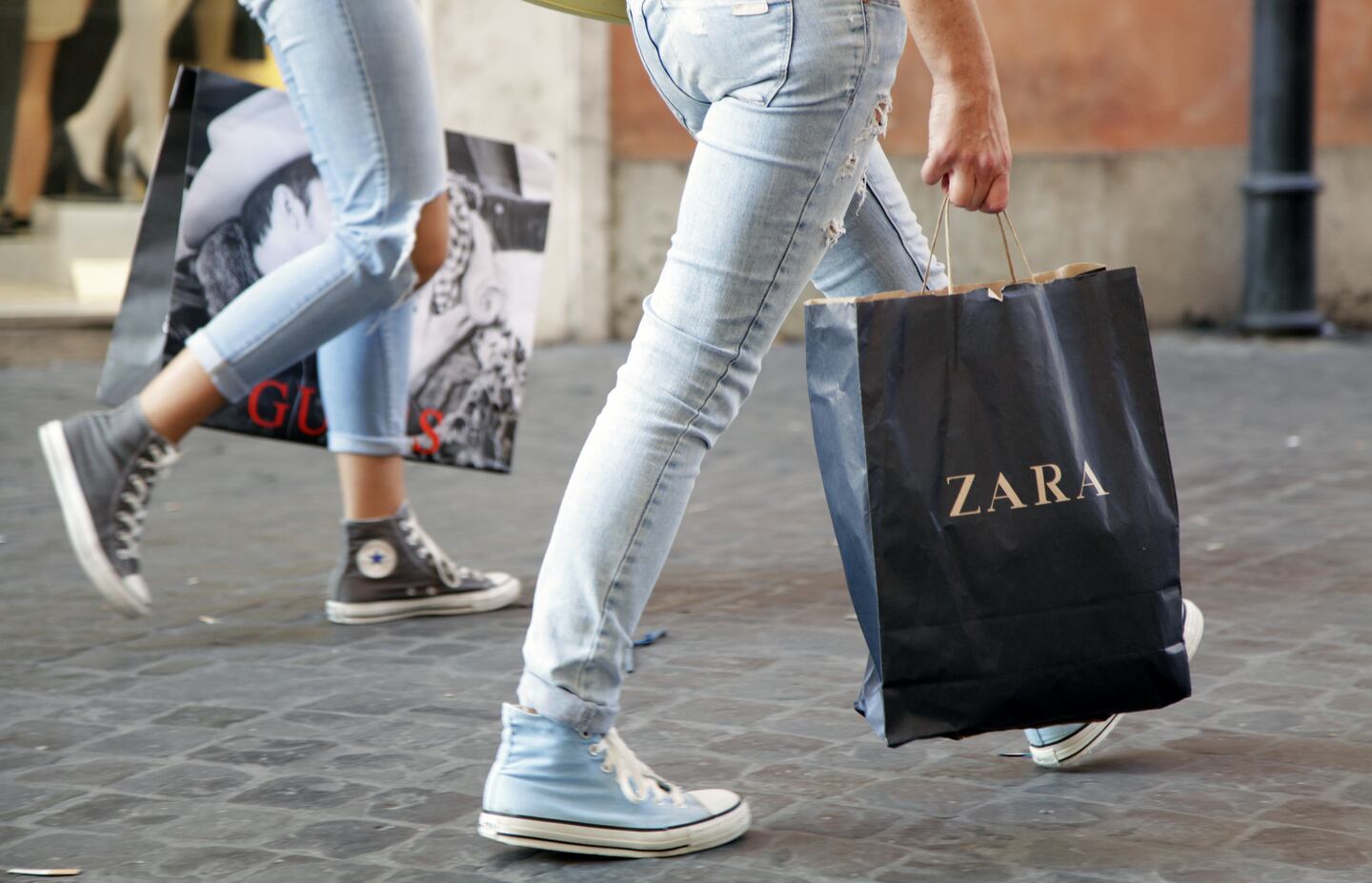
The Business of Fashion
Agenda-setting intelligence, analysis and advice for the global fashion community.

Agenda-setting intelligence, analysis and advice for the global fashion community.

MADRID, Spain — The list of retail casualties shutting up shop seems to grow by the month but Inditex SA, the world's largest clothing retailer, is still betting on its network of physical stores to drive growth.
The Zara owner has shrunk its network in its home market of Spain — by far its biggest portfolio globally — by 297 stores, or 15 percent, since 2012. Shutdowns have led some investors and analysts to worry about slowing sales growth at a company whose business has been built on a rapidly expanding store network.
However, despite the store closures, the company has actually increased its overall selling space in Spain since 2012 by opening or expanding flagship outlets in prime locations, according to a source with knowledge of the matter.
Inditex's net retail space in Spain also increased in the last financial year on an annual basis, said the source who declined to be named because the figures are confidential.
ADVERTISEMENT
No store staff have been cut due to the closures, with employees instead reassigned to other outlets, according to company and union officials.
Inditex's strategy of expanding net space could be risky at a time when shoppers are increasingly chasing bargains online, industry profit margins are declining and Amazon has become the biggest seller of clothing in the United States and Britain.
The retailer is bucking the trend in an industry where companies are shrinking their real estate portfolios, either by shutting shops or reducing store sizes.
US firm Gap Inc said earlier this year it would close 230 of its namesake brand's stores, the latest in a string of apparel retailers from Victoria's Secret to New Look that have shut stores without expanding net space.
Meanwhile, Abercrombie & Fitch, Target and Sephora are experimenting with slimmed-down stores in neighbourhood locations.
The success or failure of Inditex's plan could help determine whether combining online sales with a large store network can prevail in mass-market fashion, where blazers sell for under €30 ($34) and midi dresses for under €50.
"Consumers are changing shopping habits. Instead of shopping in secondary locations they're shopping online but they're still valuing the super-prime flagship stores," said Alistair Wittet, European equities portfolio manager at Comgest, a top 20 Inditex investor according to Refinitiv data.
"That's the thinking behind the Inditex strategy — to close the secondary stores and enlarge and improve their flagship stores."
ADVERTISEMENT
In Bilbao, for example, Zara opened a three-storey store last year in a historic building in the centre of town — complete with chandeliers, marble columns and stained-glass windows — while shutting three smaller stores in the city.
Inditex, whose executives are famously tight-lipped and rarely grant interviews, declined to officially comment on whether it had expanded retail space in Spain.
Falling Margins
Inditex has nearly 7,500 stores globally, over a quarter of which are fast-fashion leader Zara, with its other brands including Bershka, Stradivarius and Pull & Bear. That is almost twice as many as both Gap Inc and Uniqlo owner, Japan's Fast Retailing, and around 2,500 more than Sweden's H&M.
Spain has by far its largest network, with more than 1,600 outlets, and accounts for about a sixth of group sales, but the reduction in store numbers is not limited to its home market.
Last year, for the first time, Inditex shut more outlets than it opened in China — its biggest network outside Spain.
Globally, though, Inditex is still increasing overall store numbers — but the rate is slowing and the company surprised investors in March when it said it had shut more stores than expected in the last financial year.
It said it had planned to open 300 to 400 stores, and close 200; but ended up opening 370 and closing 355.
ADVERTISEMENT
"For us, the quality of the space is as important as the growth rate," Capital Markets Director Marcos Lopez said at the time. In the same month, Zara opened a large two-storey New York store in the upscale Hudson Yards development in Manhattan.
Globally, net retail space grew 4.7 percent in the last financial year. This year, the company expects growth of around 4 percent.
The accelerated closure of stores added to concerns that Inditex has lost some of its sparkle as it faces increased competition and falling margins.
Inditex's operating margins have fallen in each of the past six years, from 19.5 percent in 2013 to 16.7 percent last year, Refinitiv data shows. The figure, which has been hit by the effects of a strong euro, is still far above many of its competitors.
Year-on-year sales growth last year was the retailer's lowest since its 2001 listing. However it has more than doubled sales over the past decade and its 7 percent sales growth in local currencies last year compared favourably to rivals such as H&M, which booked 3 percent growth.
"They're certainly more mature than they were five years ago, so space growth is going to be at a lower level," said fund manager Ramiz Chelat of Vontobel Asset Management, which holds Inditex stock. "But 7 percent revenue growth in a difficult retail environment is actually very attractive."
By Sonya Dowsett, with additional reporting by Helen Reid; editor: Pravin Char.

The rental platform saw its stock soar last week after predicting it would hit a key profitability metric this year. A new marketing push and more robust inventory are the key to unlocking elusive growth, CEO Jenn Hyman tells BoF.
Nordstrom, Tod’s and L’Occitane are all pushing for privatisation. Ultimately, their fate will not be determined by whether they are under the scrutiny of public investors.
The company is in talks with potential investors after filing for insolvency in Europe and closing its US stores. Insiders say efforts to restore the brand to its 1980s heyday clashed with its owners’ desire to quickly juice sales in order to attract a buyer.
The humble trainer, once the reserve of football fans, Britpop kids and the odd skateboarder, has become as ubiquitous as battered Converse All Stars in the 00s indie sleaze years.